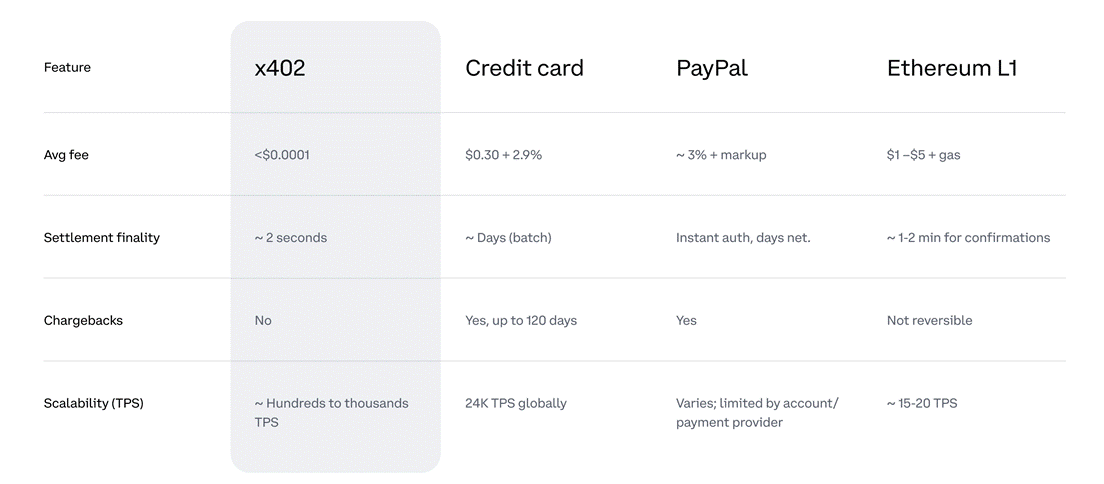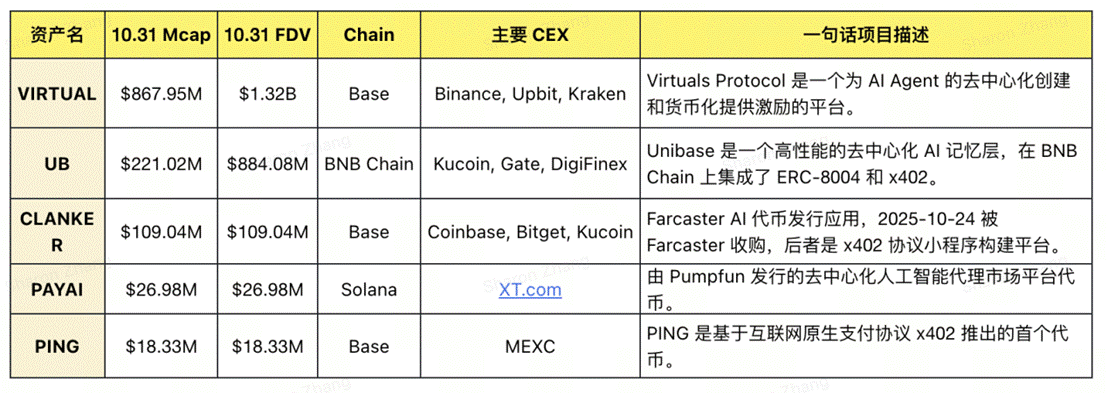Original Author: New Fire Research Institute
x402 Hotspot Background: The AI Economy Without Payment
The rapid development of the AI industry has driven the rise of the concept of agents, but most AI agents still cannot perform autonomous economic actions. They can generate content, call models, and execute tasks, but they cannot pay for their own services or data calls. The existing payment systems rely on account systems and credit institutions, while AI cannot meet the prerequisites such as KYC, API Key management, and account binding. This flaw leads to an inability to close the loop in the AI economy.

https://www.coinbase.com/developer-platform/discover/launches/google_x402
After Google launched the Agent Payments Protocol (AP2) focused on AI payment solutions, the x402 protocol previously released by Coinbase also entered the public eye, attempting to provide a more crypto-native underlying solution to this problem. x402 is based on the long-preserved but never popularized HTTP status code "402 Payment Required," embedding payment logic into the HTTP request/response process, allowing any API or agent to complete value exchange instantly upon access. Its essence is an internet-native payment standard, rather than a traditional application interface.
Both AP2 and x402 aim to achieve automated payments for AI, but the former focuses on building a centralized API payment standard that relies on platform account systems; the latter is centered on decentralization, embedding crypto payments into the HTTP protocol to achieve account-free, cross-chain real-time settlement.
x402 Protocol Design: Making Crypto Payments a Native Function of the Internet
x402 is an open payment standard based on the HTTP native status code 402 Payment Required. Its core goal is:
“To enable any AI, API, or IoT device to perform real-time, per-use value exchange at minimal cost.”
Technically, x402 embeds "payment" into the HTTP protocol stack—developers only need one line of code:
paymentMiddleware(amount: "0.10", address: "0x…") to enable AI to call and pay instantly.

https://www.coinbase.com/developer-platform/products/x402
Compared to traditional payment solutions (such as credit cards, Stripe, PayPal, or OpenAI prepaid credit systems), x402's structure is closer to internet underlying standards.
This design brings three major features:
- Account-free: Payers and service providers interact through blockchain addresses without the need for traditional account systems.
- Instant settlement: Payments and access are almost completed simultaneously, with payment times of "≤ 2 seconds" on some L2 networks.
- Supports micropayments: Can support transactions as low as $0.0001, suitable for high-frequency small-scale scenarios such as content, data, and APIs.
Additionally, the protocol is chain and token neutral, currently primarily using stablecoins (such as USDC on Base) as the main settlement asset, with future scalability to multi-chain solutions.
x402 Application Prospects: From Pay-per-Use to the Value Network of the Machine Economy
The greatest significance of x402 lies in enabling "machines/agents" to have economic interaction capabilities, rather than merely calling functions. Its application directions include:
- Pay-per-Use: AI models, data APIs, and computing power can be billed per call, without the need for subscriptions.
- Autonomous Payments by Agents: Agents can freely call services and pay without human preloading or account management.
- Micropayments for Content and Data: Paying by article, by second, or by data volume becomes possible, breaking through traditional advertising/subscription models.
- Machine-to-Machine (M2M) Payments: IoT devices and automated systems can complete spontaneous value exchanges through x402.
From an industrial perspective, with the rise of the AI agent economy, such protocols provide a new "value layer" infrastructure.
The application space of x402 is not limited to payments. Its core value lies in enabling machines to have economic interaction capabilities.
x402 Development Trends and Real-World Challenges
x402 is currently still in the early promotion stage. Coinbase is promoting it to become the AI native payment standard through its numerous partners, as well as the very popular Ethereum L2 Base network and USDC stablecoin ecosystem. If this standard gains widespread adoption among developers, x402 is expected to become the "TCP/IP of the AI economy," serving as the value transmission protocol for all agents and API layer interactions.

https://www.coinbase.com/developer-platform/products/x402
However, the challenges facing x402 are also evident. The regulation of stablecoins and cross-border compliance issues have not yet been fully clarified; HTTP 402 as a network layer standard still requires widespread adoption by mainstream developers and platforms; on-chain micropayments also need further optimization in terms of performance and cost. Overall, these issues are more like transitional obstacles in the early infrastructure popularization stage rather than fundamental barriers. Currently, x402 is still mainly in the concept validation and developer experimentation stage, with no urgent application scenarios, and it will take time to achieve large-scale commercialization.
x402 Ecological Layout and Investment Perspective
Ecological Builders:
The long-term development of x402 relies on the improvement of ecological construction and investment collaboration. The ecological aspect needs to focus on three major directions:

https://docs.cdp.coinbase.com/x402/support/faq
Ecological Construction Layer: Mainly Coinbase and Circle, which are the core driving forces behind the standardization and industrial implementation of x402. Coinbase is responsible for protocol development and ecosystem integration, while Circle provides circulating assets and compliance stablecoin support, together building the operational foundation of x402.
Public Chain Foundation Layer: Currently, only Base Chain and Solana support the x402 protocol, with the former serving as the core carrying network of the Coinbase ecosystem, natively supporting USDC settlement; the latter, with its high performance and low cost, provides potential expansion space for AI payments and micropayment scenarios.
Product Application Layer: The application layer consists of Facilitators, Wallets, and Bazaars, which together form the service and interaction hub of x402. Facilitators are responsible for payment matching and settlement, making fund circulation more efficient; Wallets handle signing and payment execution, serving as the identity entry for users and AI agents; Bazaars, as the discovery layer, aggregate callable services and resources, allowing agents to autonomously search for and pay for access, ultimately building a complete application loop.
Related Concept Tokens:

Combining the previous announcement of Binance Alpha delisting Solana Memecoin, it can be speculated that Binance will still exclusively support related projects on the BNB Chain in this track, while Coinbase's listing pace is expected to remain relatively cautious. Referring to the situation when the Solana AI Agent concept emerged last year, such projects typically need to achieve a market value of about $100 million through DEX trading in the early stages to have a chance of being included in observation or activity launch lists.
Investing in the x402 track requires attention to protocol adoption rates, sustained growth in transaction volumes, the implementation of ecological projects, and changes in regulatory policies.
免责声明:本文章仅代表作者个人观点,不代表本平台的立场和观点。本文章仅供信息分享,不构成对任何人的任何投资建议。用户与作者之间的任何争议,与本平台无关。如网页中刊载的文章或图片涉及侵权,请提供相关的权利证明和身份证明发送邮件到support@aicoin.com,本平台相关工作人员将会进行核查。




